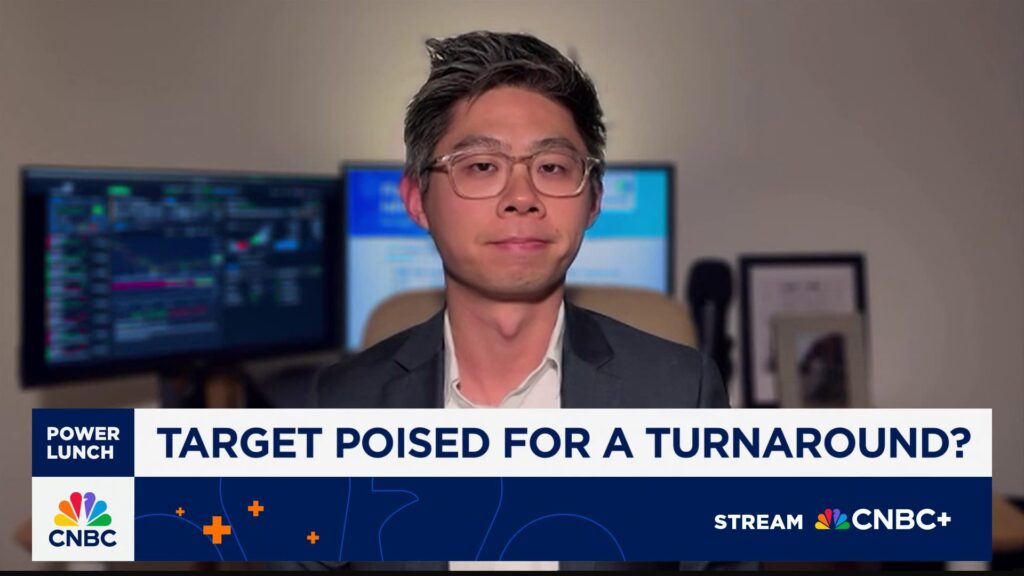In a recent appearance on CNBC’s ‘Power Lunch’, Tony Zhang, chief strategist at OptionsPlay, expressed optimism about Target Corporation’s stock performance, suggesting that current levels may signal the beginning of a recovery. Zhang’s insights come at a crucial time as investors closely monitor the retail giant’s financial health amid fluctuating market conditions.
Target’s stock has faced significant challenges in recent months, with market volatility and economic uncertainties impacting its valuation. However, Zhang believes that the current price levels offer a potential entry point for investors looking for recovery opportunities. “We are seeing signs that could indicate a bounce back,” Zhang stated during the segment.
Market Context and Target’s Recent Performance
The retail sector has been under pressure due to a combination of inflationary pressures, supply chain disruptions, and changing consumer behaviors. Target, a key player in the industry, has not been immune to these challenges. The company’s stock has seen a decline of over 15% in the past year, reflecting broader market trends.
Despite these hurdles, Target’s strategic initiatives, including its focus on e-commerce and same-day delivery services, have positioned it well for a potential rebound. The company’s recent earnings report showed resilience, with a slight increase in revenue, albeit with narrower profit margins.
Expert Opinions and Market Analysis
According to Zhang, the market’s current sentiment towards Target may be overly pessimistic. “The fundamentals are stronger than what the stock price suggests,” he noted. This view is echoed by other market analysts who point to Target’s robust supply chain management and customer loyalty programs as key strengths.
Financial analyst Sarah Collins added, “Target’s ability to adapt to market changes and its investment in digital infrastructure are significant factors that could drive future growth.” Collins highlighted the company’s strategic partnerships and expansion into new product lines as additional reasons for optimism.
“Target’s adaptability and strategic investments make it a compelling case for recovery,” said financial analyst Sarah Collins.
Historical Parallels and Future Outlook
Historically, Target has demonstrated resilience in the face of economic downturns. During the 2008 financial crisis, the company managed to maintain steady growth by focusing on value-driven strategies and expanding its market reach. This historical precedent provides a framework for understanding how Target might navigate current challenges.
Looking ahead, Zhang suggests that investors keep an eye on key indicators such as consumer spending trends and supply chain improvements. “These factors will play a crucial role in determining the pace and extent of Target’s recovery,” he explained.
Meanwhile, the broader retail landscape continues to evolve, with competition intensifying from both traditional rivals and online platforms. Target’s ability to innovate and maintain its competitive edge will be critical in shaping its future trajectory.
Implications for Investors
For investors, Zhang’s analysis offers a cautiously optimistic perspective. While risks remain, the potential for a stock rebound presents an opportunity for those willing to navigate the current market complexities. “It’s about timing and understanding the underlying strengths of the company,” Zhang concluded.
As the market continues to react to economic indicators and consumer sentiment, Target’s performance will be closely watched by analysts and investors alike. The company’s upcoming quarterly earnings report could provide further insights into its recovery prospects and strategic direction.
In conclusion, while uncertainties persist, the potential for Target’s stock to recover remains a topic of interest and debate among market experts. As Zhang and others have noted, the company’s strategic initiatives and historical resilience offer a foundation for cautious optimism.
About The Author
 NexusTek Celebrated Among Top Global Managed Service Providers in 2025
NexusTek Celebrated Among Top Global Managed Service Providers in 2025 Peachtree Corners Partners with MUFG to Advance Smart City Innovations
Peachtree Corners Partners with MUFG to Advance Smart City Innovations Trump’s Megabill: A Comprehensive Look at Its Impact Across America
Trump’s Megabill: A Comprehensive Look at Its Impact Across America Tax-Free Municipal Bonds: A Strategic Play Amid Market Fluctuations
Tax-Free Municipal Bonds: A Strategic Play Amid Market Fluctuations Salvadoran Journalist Mario Guevara Released on Bail Amid Immigration Proceedings
Salvadoran Journalist Mario Guevara Released on Bail Amid Immigration Proceedings